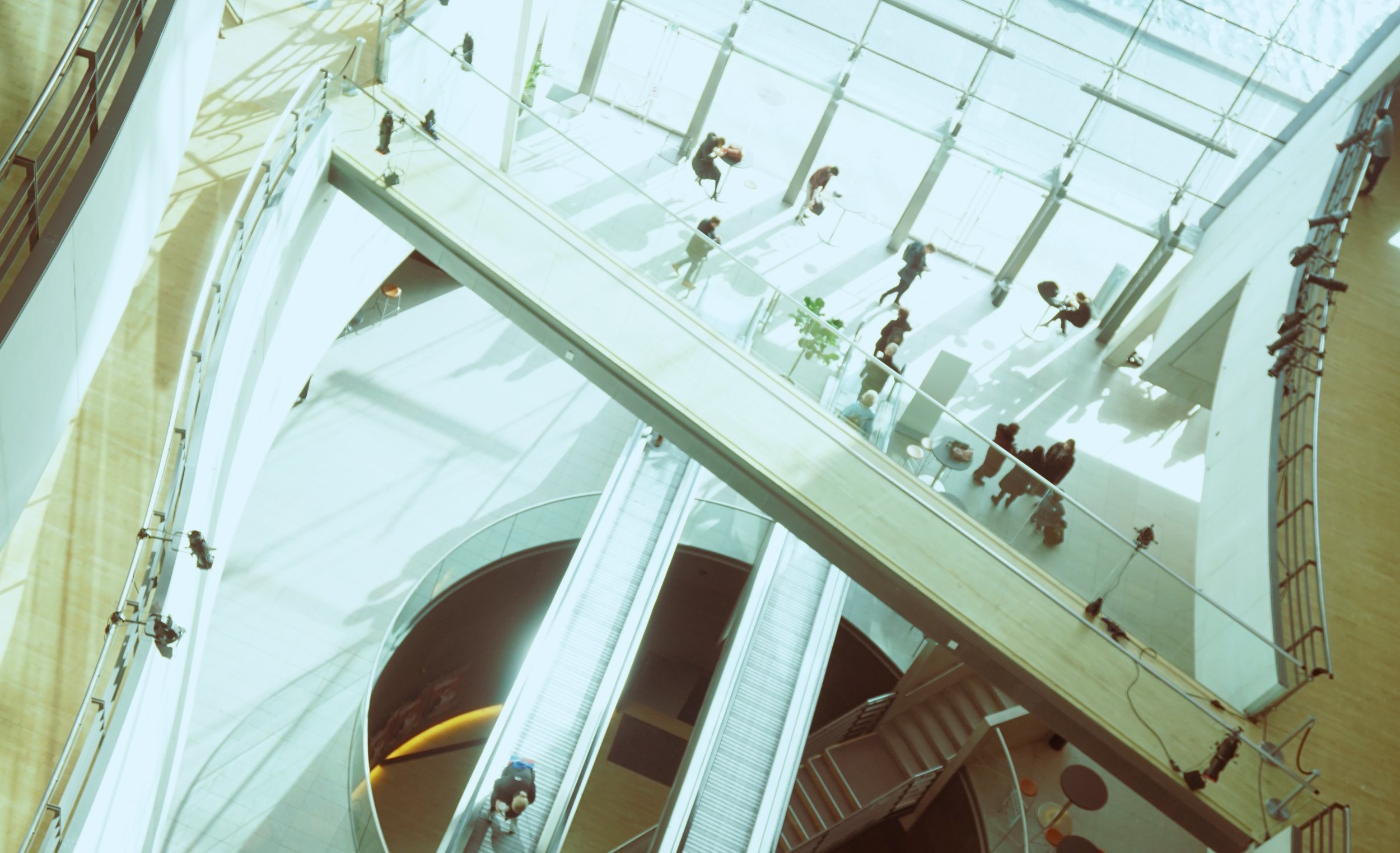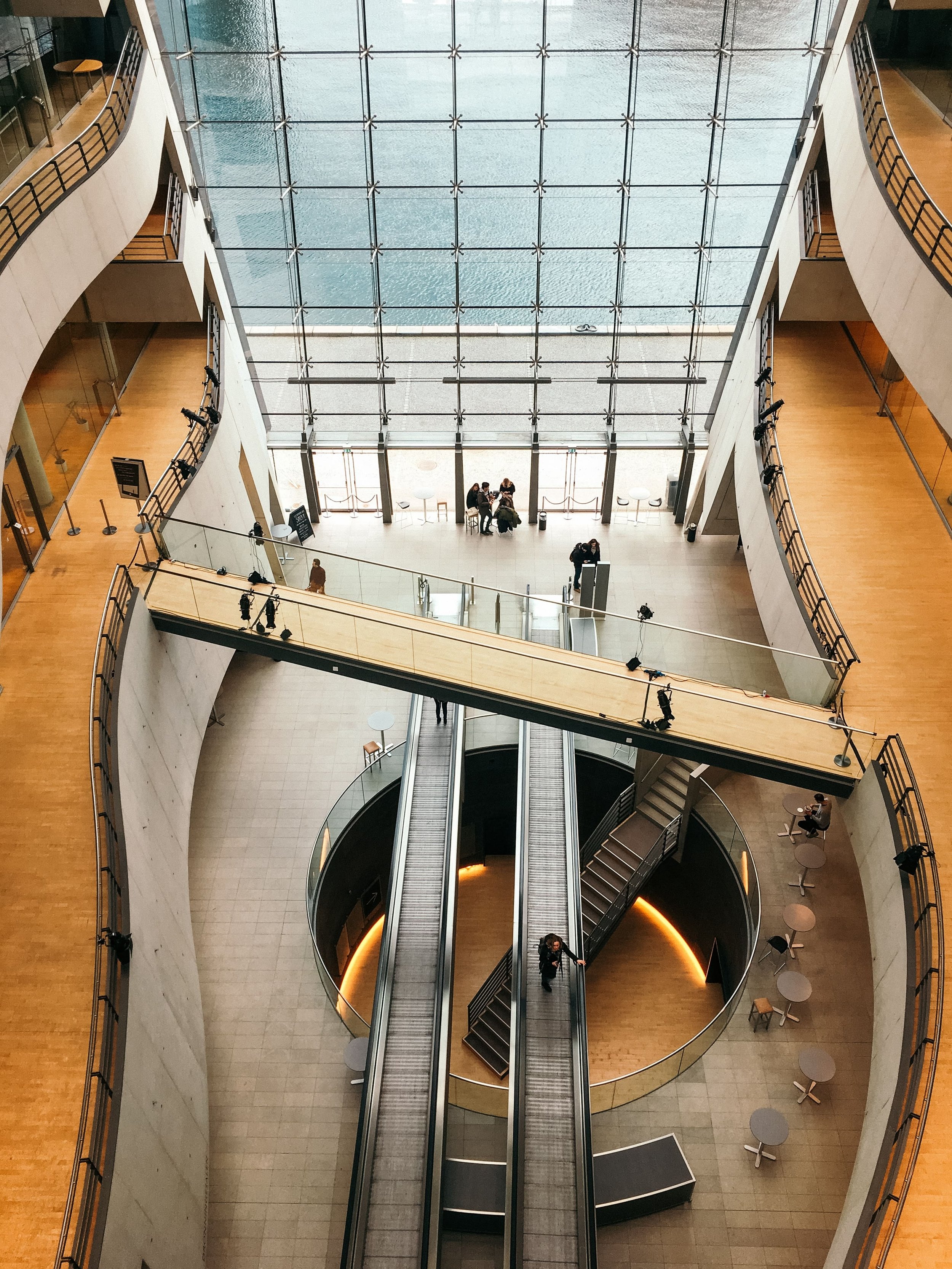Visit The Black Diamond, Copenhagen.
When walking through the centre of Copenhagen, it’s hard to miss the Black Diamond.
Compared to the spires, arches and towers of surrounding landmarks like Christiansborg, Børsen and Amalienborg, the Black Diamond rises like a modern monolith, perched majestically beside its 18th and 19th-century counterparts.
Built in 1999 as an extension to the Royal Danish Library, the venue hosts national archives, concerts, study spaces and seasonal exhibitions. It also happens to be the largest in the Nordic countries and serves as the national library of Denmark and as the library of the University of Copenhagen.
No matter from which direction you approach the structure, you’ll notice the eqcuisite asymmetry in its design; each curve and bend leading the eye upwards.
In this guide, I’ll take you through a short history of this amazing library, and offer a few tips on when to visit and what to see (including the amazing cafe!).
The history of the Black Diamond
One of the most memorable things about visiting the Black Diamond is the smooth architectural transition between the ultra-modern glass of the new library, to the brick and stonework of the existing Royal Danish Library.
This building, and its surrounding buildings, were built in 1906. It was in 1993 that the Ministry of Culture took the decision to expand the library, creating space for more cultural events and greater academic openness in the centre of Copenhagen.
The winning design came from the Danish architect group Schmidt Hammer Lassen Architects, and the construction was completed in 1999.
The outside of The Black Diamond is made of 2,500 m² of jet black granite, mined in Zimbabwe, each block weighing 75 kg. It creates an amazing spectacle when the sun shines, as the granite reflects across the water.
Visiting the Black Diamond
The staff is made up of university employees, each of which are knowledgeable on the history of the building and how best to see it.
I would recommend taking in the excellent cafe for a morning snack or excellent lunch. Explore the shop, packed with Scandinavian design goodies and then descend the stairs to explore the temporary exhibition space (ticket required, which can be purchased at the shop).
Head up the escalators to the passageway which passes into the old library building, and find yourself suddenly immersed in the decorative academic reading rooms of the early 20th century. Unless you’re a student at the university you won’t be able to go inside, but have a peep through the windows (see image, above right).
Once you’re done, head back outside the Black Diamond for a final stroll along the waterside.
Have a peek through the windows into the university reading room, situated inside the old building from 1906.
The criss-crossing walkways and balconies keep the eye moving to take in the full scale of the Black Diamond.
Getting there:
Søren Kierkegaards Plads 1, 1221.
Due to its location, the Black Diamond is pretty accessible by foot from the centre of Copenhagen. It’s a short stroll north from the central station and Tivoli, although if you are travelling from further afield I’ve noted some of the nearest train and bus stops to the palace below:
Gammel Strand Metro Station (metro, bus)
Harbour bus: The Royal Library
Metro: Gammel Strand Metro Station (metro, bus)
Trains: Copenhagen Central Station or Nørreport Station.
Opening hours:
Monday to Friday 8:00 to 19:00 and Saturday 9:00 to 19:00.
If you are in the area, make sure to also check out the impressive Christiansborg Palace, the home of the Danish parliament.
Or if you are going to keep strolling north along the waterside, you’ll definitely come across the beautiful old harbour of Nyhavn.


